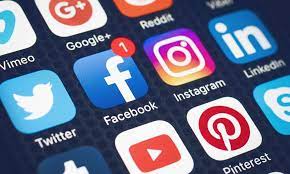By: Caden Gray
FAYETTEVILLE, Ark. (UATV) — The mental health effects of social media have never been more prevalent, exacerbated by the lonely months spent during the COVID-19 pandemic. Recent studies have found that the overuse of social media has a direct correlation to worsening mental health in college students. Now, a new concept is taking its toll – “doomscrolling.”
What is doomscrolling?
It’s a relatively new concept, being coined sometime in 2017 but only gaining traction around 2019. It refers to the extensive scrolling of negative content via social media or news networks. What little research that has been done on the subject shows a complex but important relationship between doomscrolling and mental health.
At the University of Arkansas, professor of psychology Jennifer Veilleux ran a research lab concerning doomscrolling. Data is still being collected so the findings are not quite published yet, but the numbers we do have already show signs that doomscrolling is worth talking about. The study found that, on average, 75% of college students doomscroll – a number Veilleux said is higher than expected.
Why do students doomscroll?
The same study also found that most students doomscroll in response to large scale events, usually tragedies. Examples of this include the Israel-Hamas war, the January 6th Capitol Attack, and of course, the pandemic. Often, when an event like this occurs, students want to validate their feelings. In fact, 60% of students in the study said they look for others that feel the same way they do, which usually results in some form of doomscrolling.
Over one-third of students said they doomscrolled because they wanted to feel angry. “When people want to feel the fire it’s because anger is a sense of unfairness or injustice,” said Veilleux. “When people want to feel that, it tends to motivate them to want to change – change the world.”
Emotional validation is certainly not the only reason students doomscroll. The most common response from students was the desire to stay informed. “The last time I doomscrolled, that’s what I was trying to do,” said Veilleux. “I kept hitting refresh because I wanted to know what was going on or I would look at a different news source to see if one place had updated before another.”
Mental health effects of doomscrolling
The idea of doomscrolling is that it acts as a trap of negative emotions – what’s called a negative content feedback loop. This is reinforced by the idea that social media algorithms constantly recommend content based on past behavior. Thus, the more negative content someone watches, the more negative content they will be recommended.
“I feel like it boxes me into an echo chamber where I’m constantly being shown and told exactly what I want to hear and be told,” said Grady Cape, a U of A student.
This is most evident in popular contemporary social media like TikTok, which features short form content that some believe is designed to suck you in. “You watch one video, two videos – and they (social media apps) will immediately start putting those into your feed as you scroll,” said Yun Sanders, another U of A student. “It’s definitely tailored to watch for long periods of time even though they’re like six second videos.”
The effect is only worsened by the integration of news into most social media platforms. The most recent survey done by the Reuters Institute found that 15% on TikTok use the platform for their news.
While more research needs to be done to draw final conclusions about the mental health impact of doomscrolling, Veilleux said there’s certainly a connection. “Worry is thinking about what could happen, rumination is thinking about what has happened,” she said. “Doomscrolling is just a conglomeration of both.” She also reported that those with symptoms of anxiety and depression are more likely to doomscroll.
A study conducted by psychological researchers in conjunction with the Huffington Post found that 27% of people are more likely to report their day as unhappy after watching only three minutes of negative news earlier in the day. The same study also found that even a small portion of negative content can significantly reduce workplace productivity.
The obvious approach to avoid doomscrolling is to stay away from negative content, a sentiment many share. In fact, the most recent Reuters Institute survey concluded last year found that almost 40% of people avoid the news entirely for this reason, up from 29% in 2017.
Most research done on the subject concludes that doomscrolling is less a result of the content itself and more about the headspace of the consumer. “It’s like you’re in a car stuck in the mud,” Veilleux said. “The tires are moving, and they keep going, but you’re not moving anywhere. You’re just staying in the same place.”
Veilleux said the research on doomscrolling is promising, but much more needs to be done before anything conclusive can be established.


